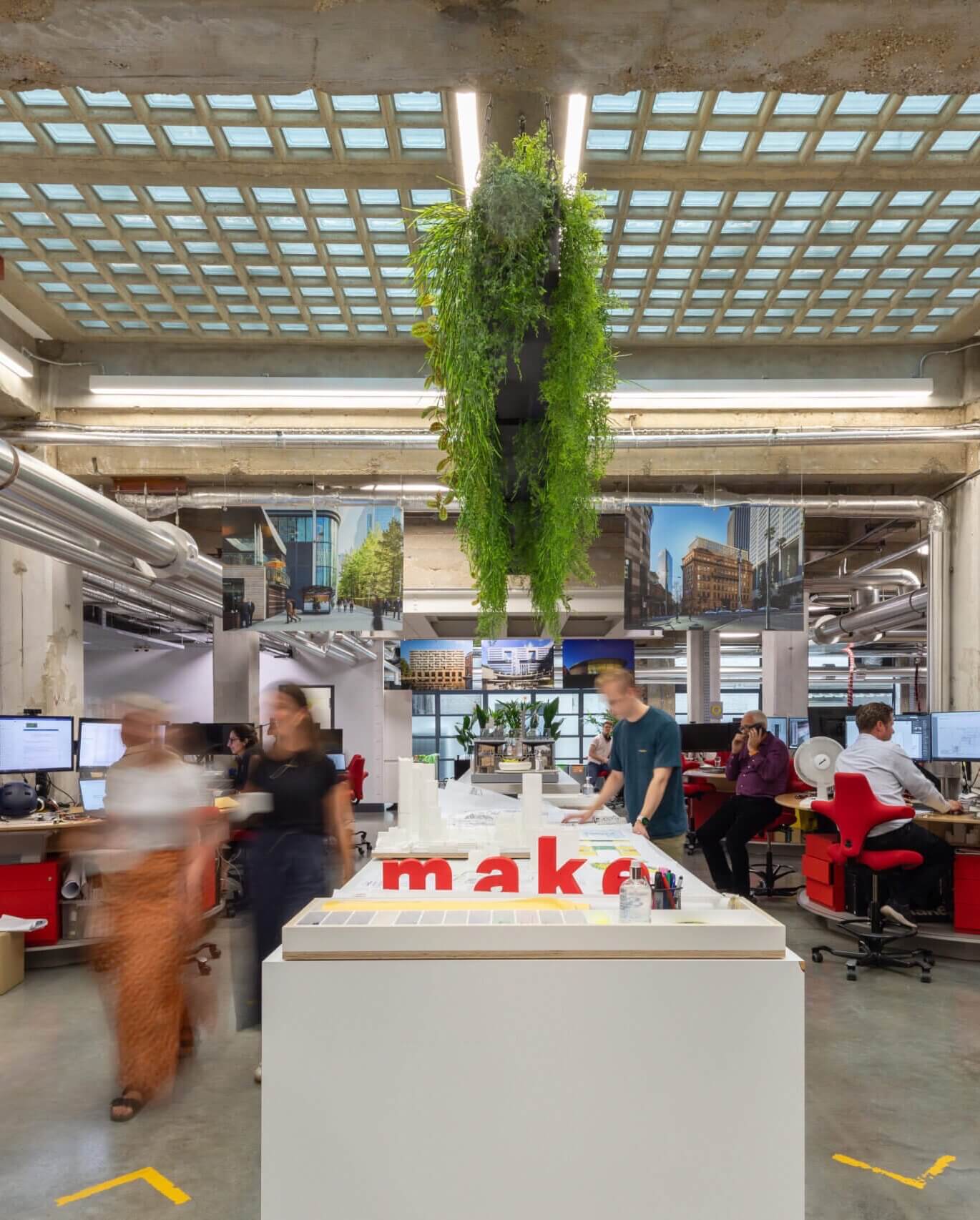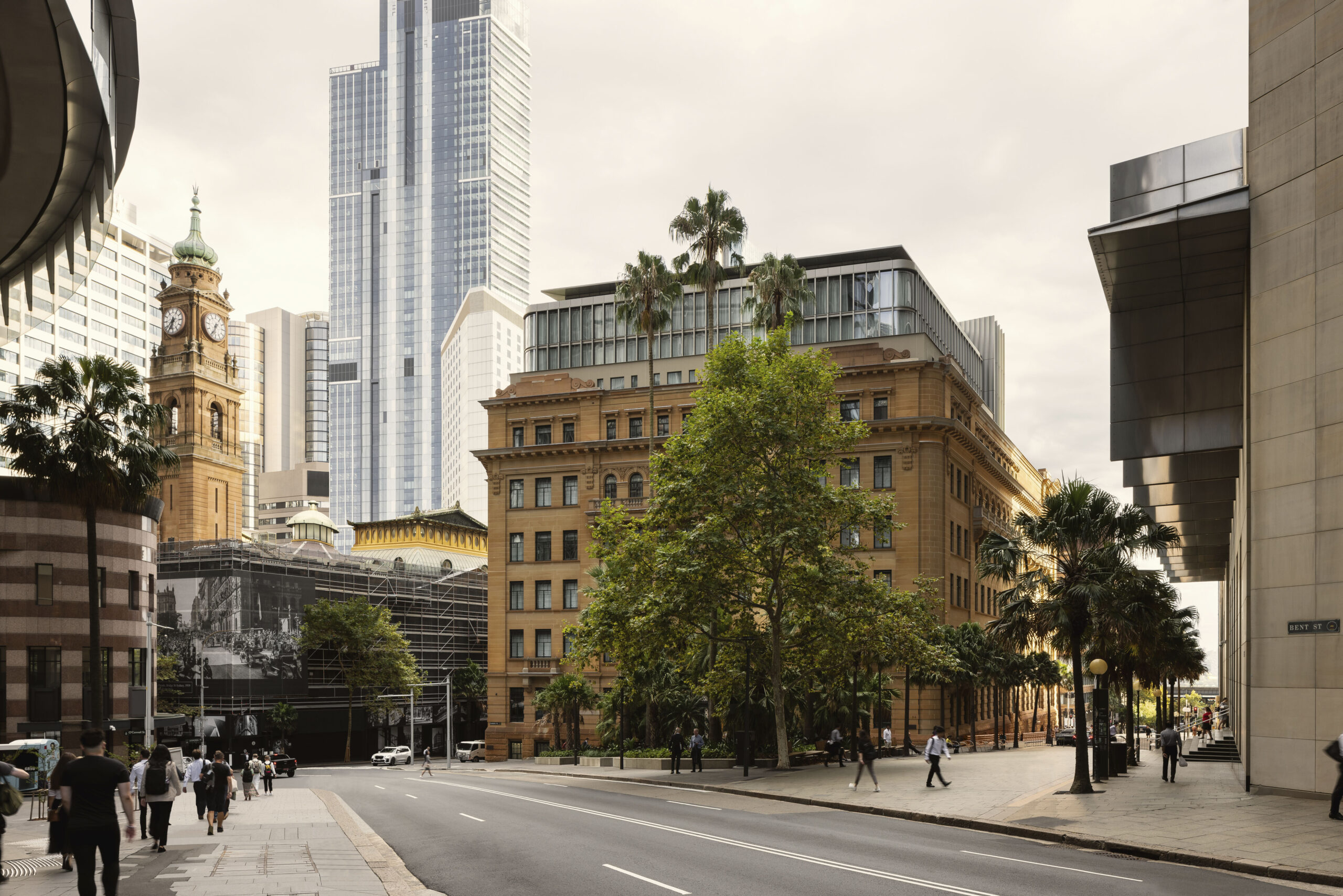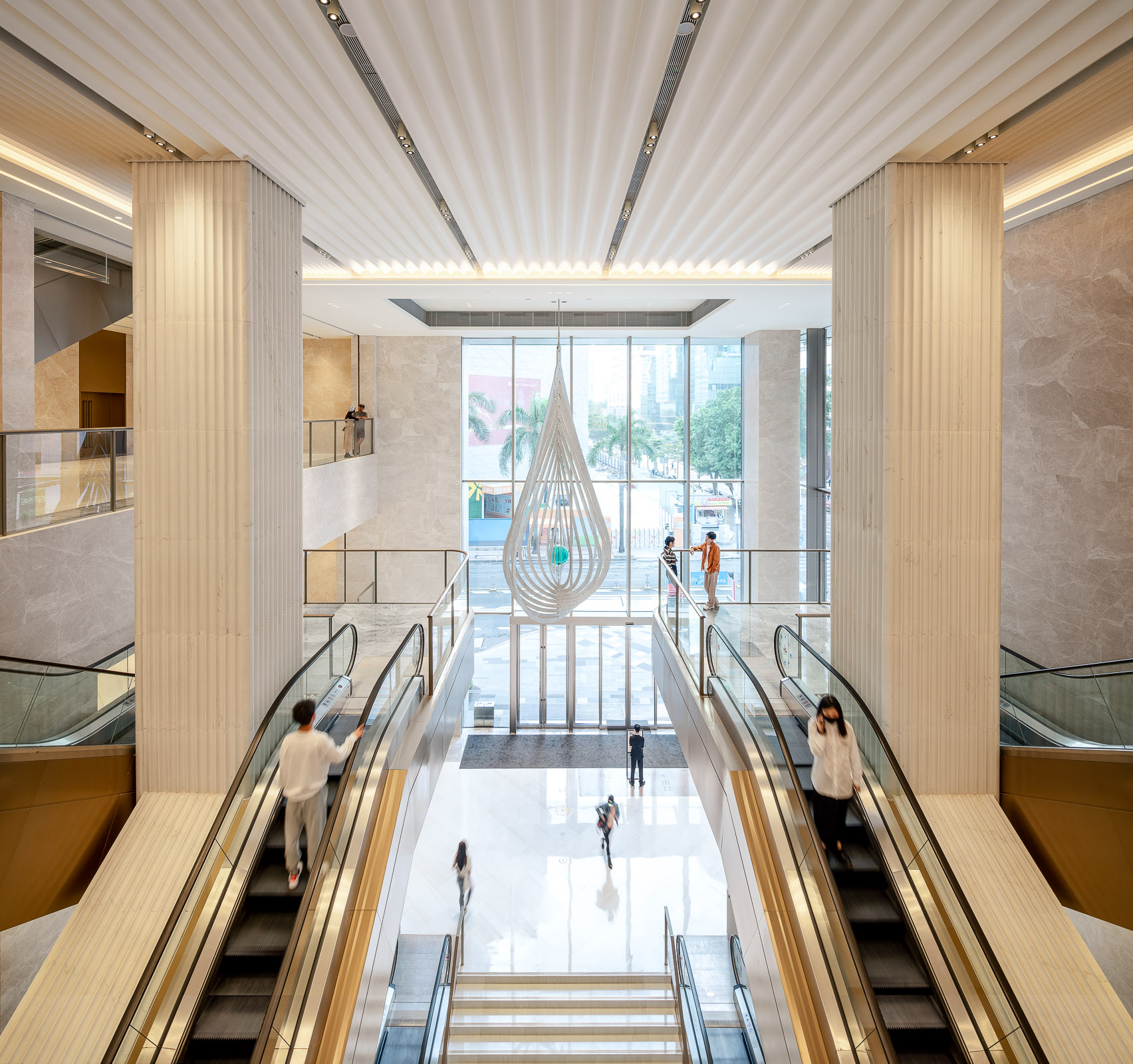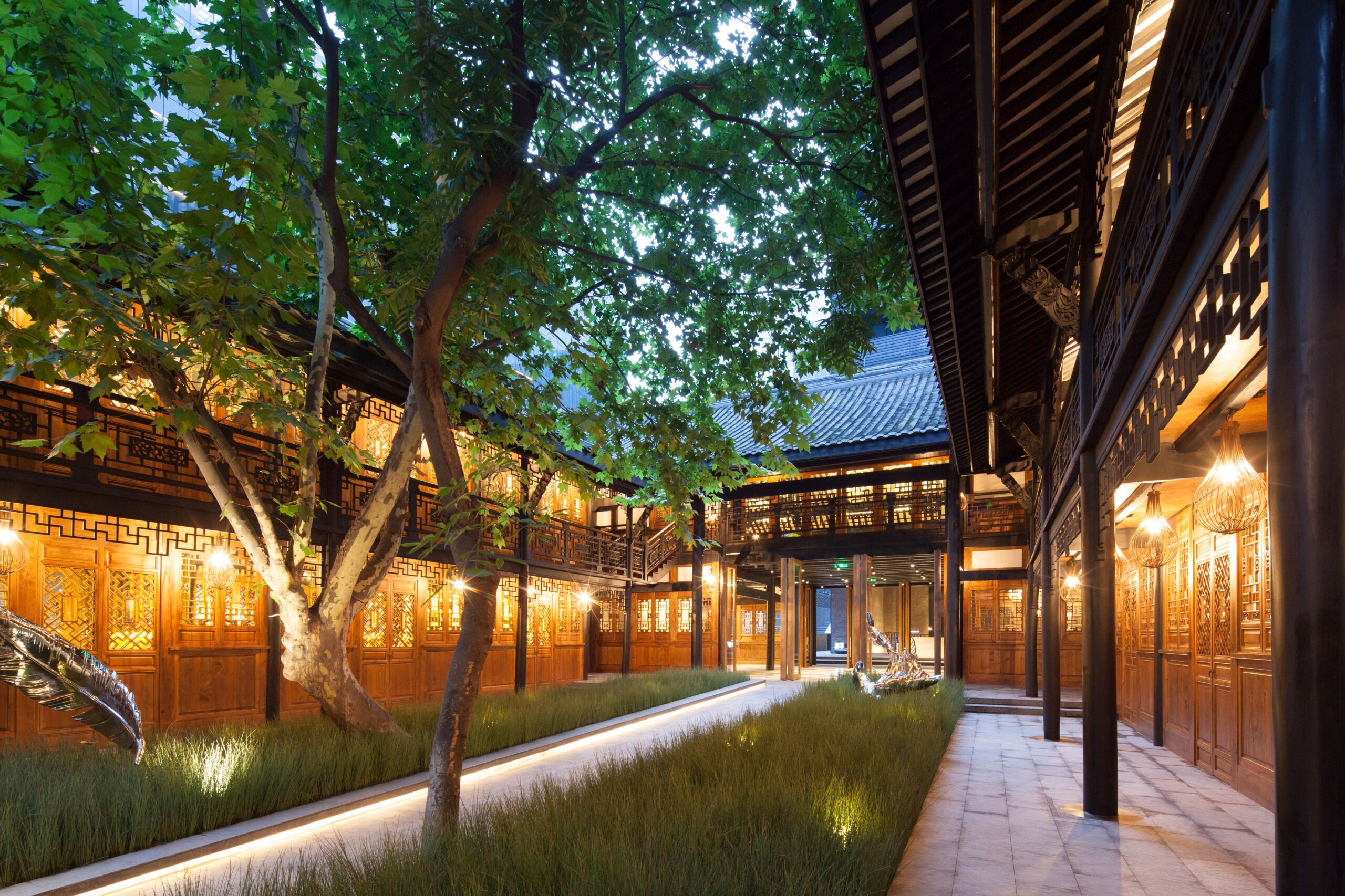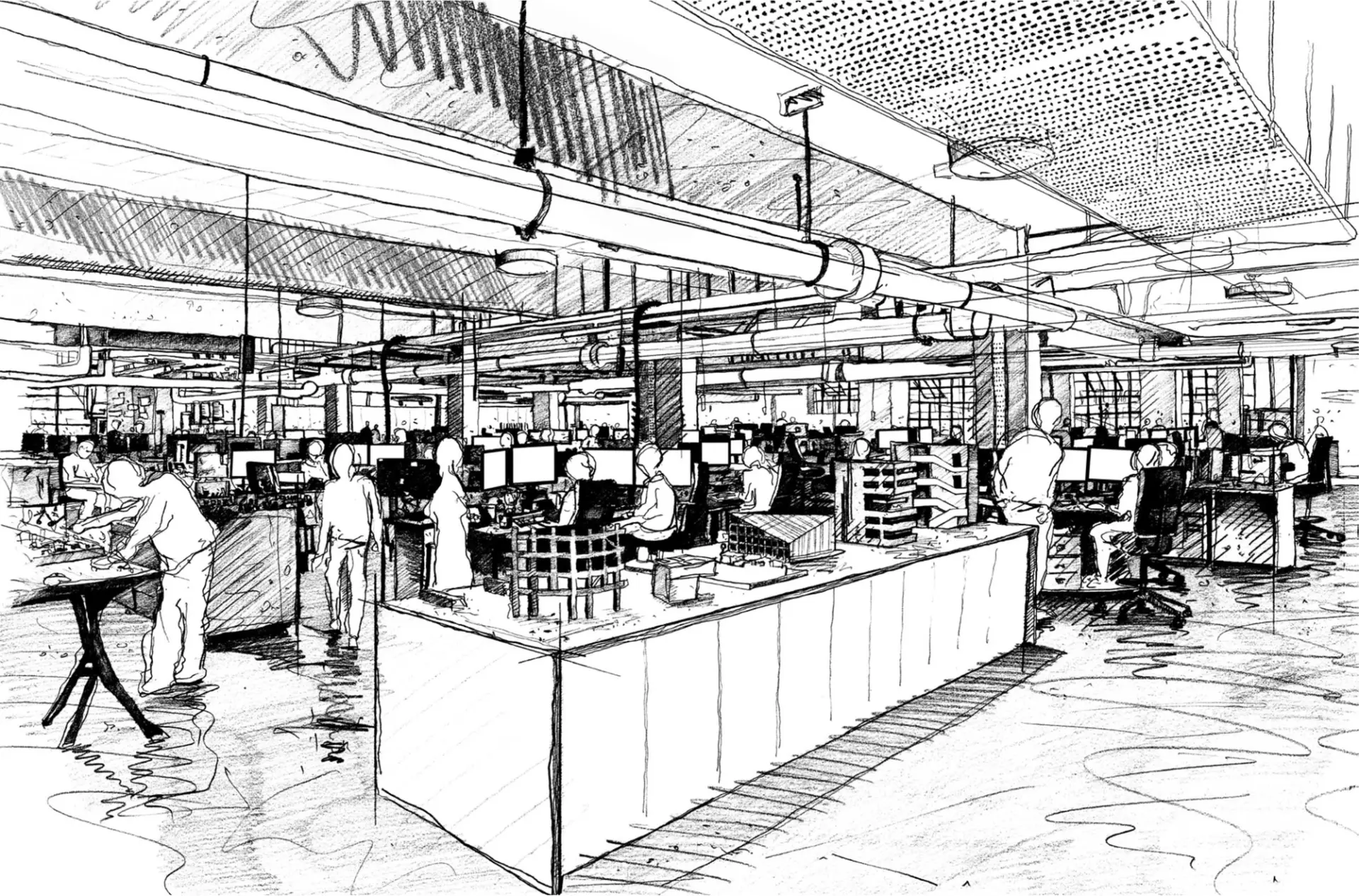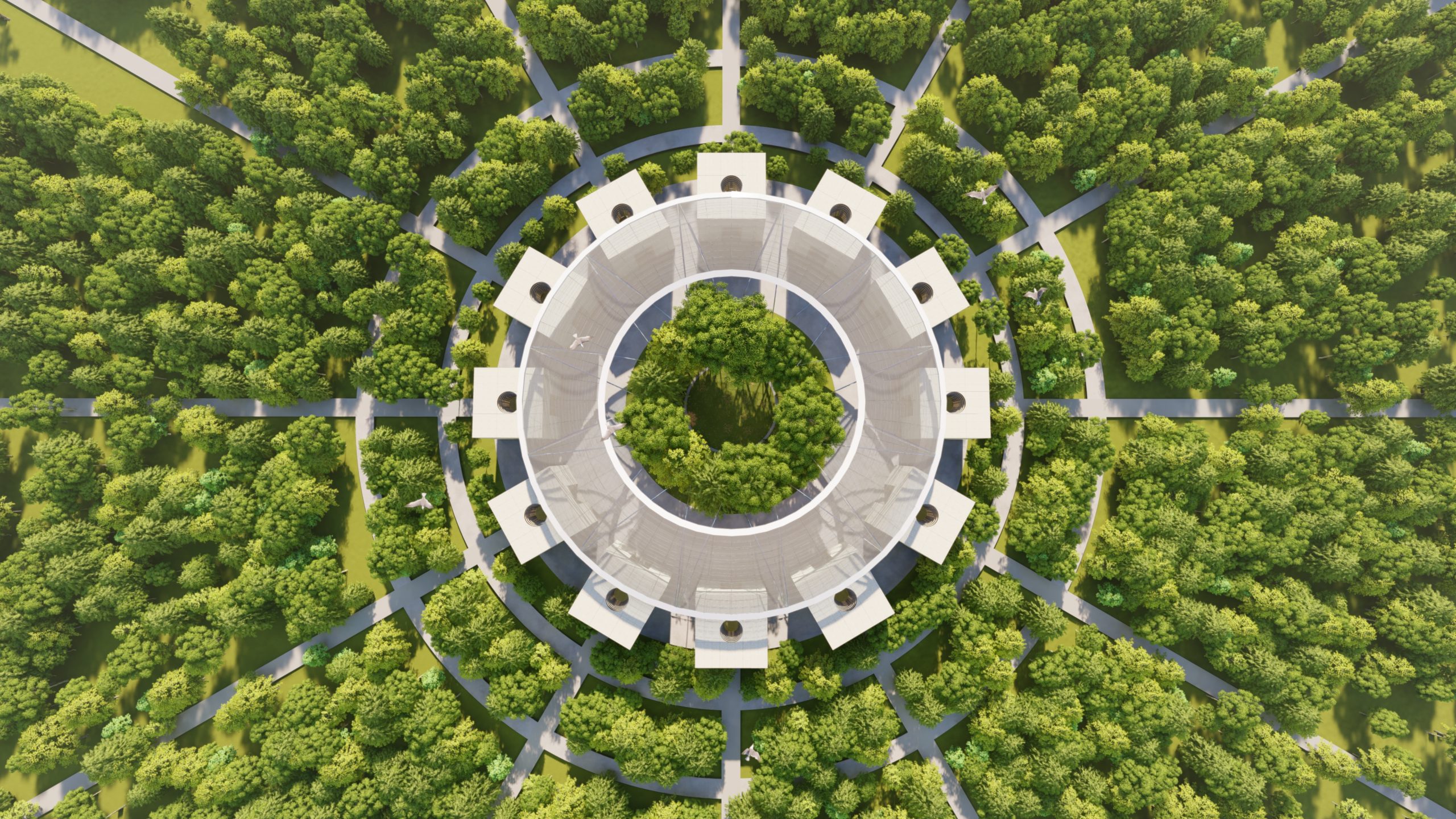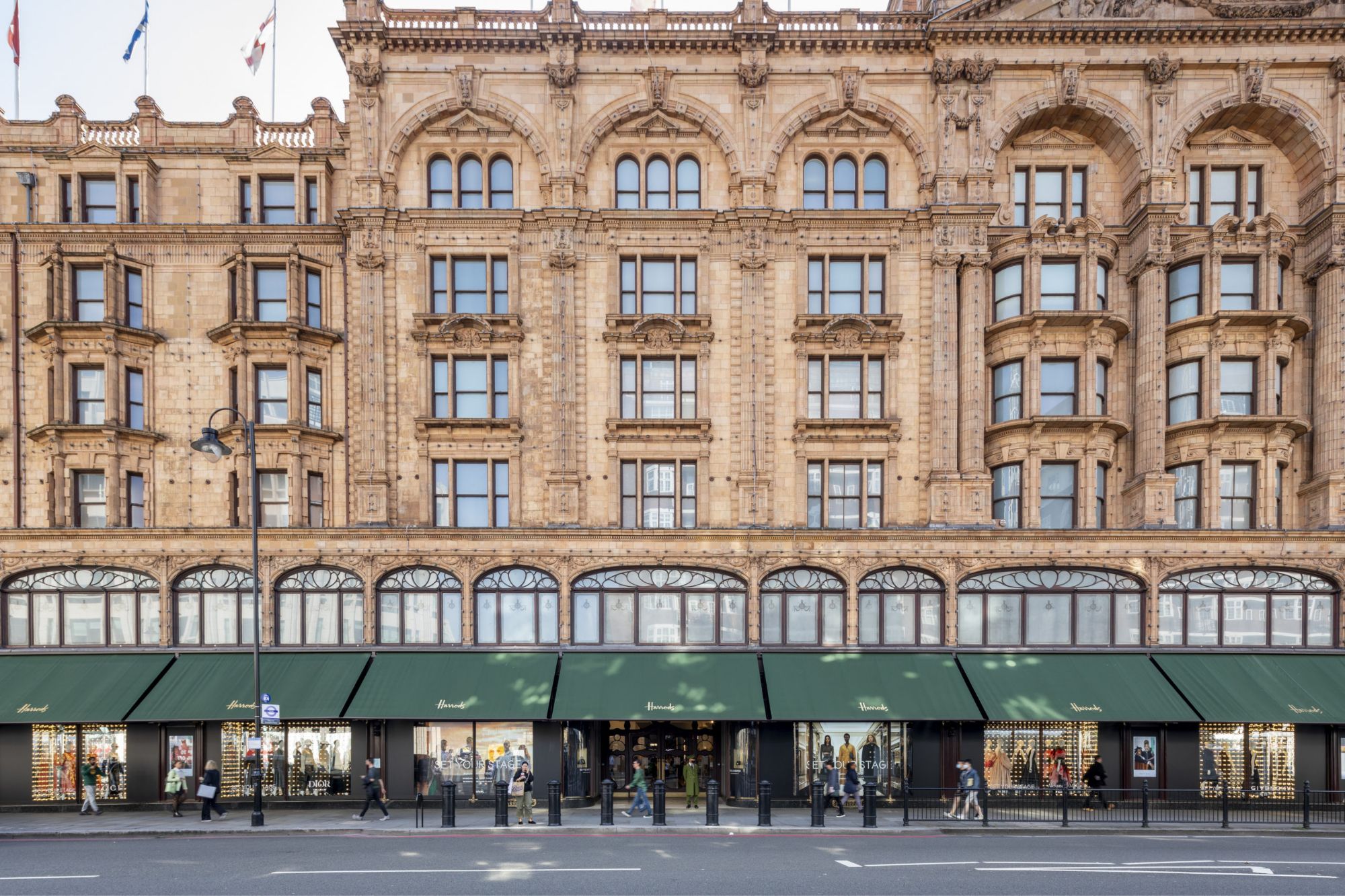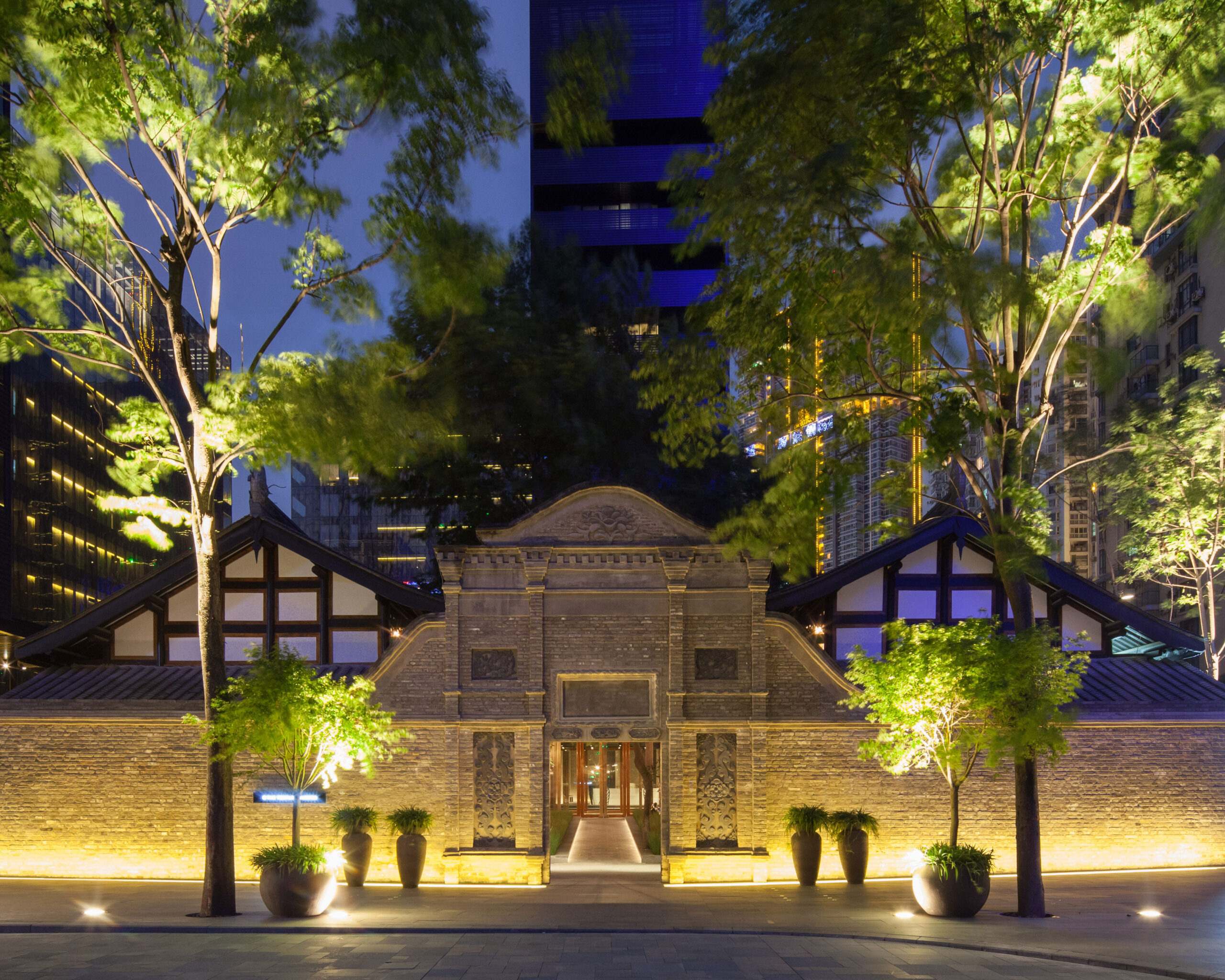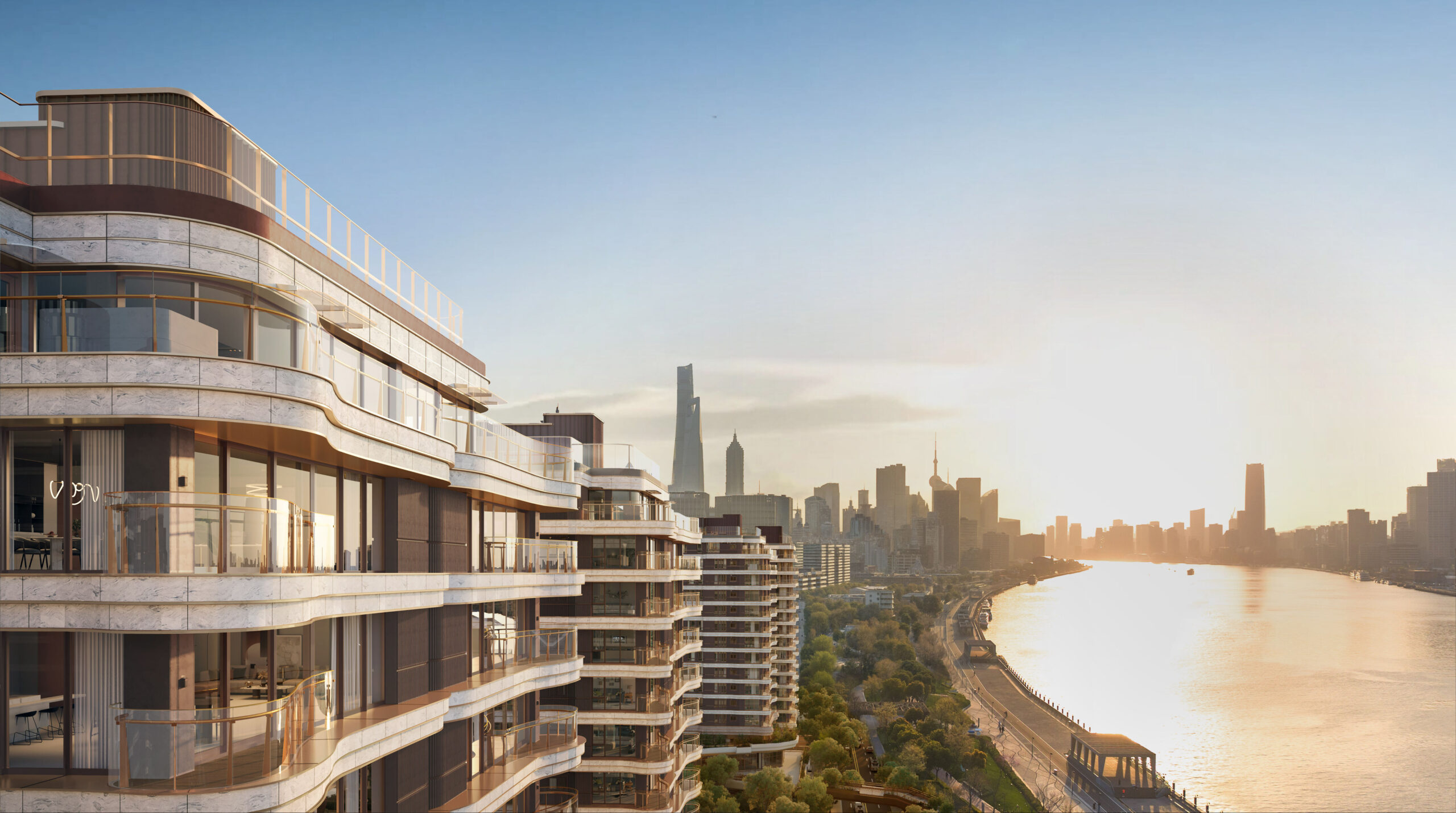
Sir Donald explains how he paints in the Impressionist style plein air, which is the French expression for “in the open air”. The paintings of Claude Monet, currently on display at the Monet & Architecture exhibition in The National Gallery (9 April – 29 July 2018), capture these moments of light and its changing, ephemeral qualities.
In the essay ‘Hapticity and Time – Notes on a fragile architecture’, architectural theorist Juhani Pallasmaa describes how ‘matter and decay strengthen the experience of time, causality and reality’. In the same way, Sir Donald’s “fragile” portrayal of ‘matter and decay’ invites tangible audience participation – this is the mover of its success. By contrast, my go-to digital designing tools have an aptitude for “realism”, which skips the “fragile” beauty of hand drawings, favouring to automate audience participation into an intangible idea of perfection instead. Both styles have merit in their own right.


Zaha Hadid progressed the plein air ethos of being in the moment by creating evocative atmospheres which were used as a tool for designing new buildings. The Peak, painted in 1982-83 progressed further into a virtual environment in 2017 at the exhibition ‘Zaha Hadid: Early Paintings and Drawings’. Audiences gained a ‘new insight and an intriguing continuity and expansion of the painting works and their vitality’.
Whilst virtual environments invite audience participation, the value of that participation must not be forgotten. Value does not solely lie in processes and techniques, but in the perception of people we design and build for.
A degree of critical thinking is therefore required so that we utilise digital technology to firstly understand our built environment and then communicate this knowledge within our proposals. This can inform design development within a digital environment so that analysis and ideas are distilled into reality. Hybrid Modelling offers a way to combine illustrative styles to describe what’s fixed and what is not in a design to provoke thought and reflection – not quite plein air à la the French Impressionists, but a way of immersing audiences within evocative atmospheres’.

Instagram: gwyn_arch
Twitter: gwyn_arch
Email: gwyn.roberts@insall-architects.co.uk
Image 4: ArtStation
This post forms part of our series on The Architecture Drawing Prize: an open drawing competition curated by Make, WAF and Sir John Soane’s Museum to highlight the importance of drawing in architecture. The next round of the competition will launch in July 2018.





